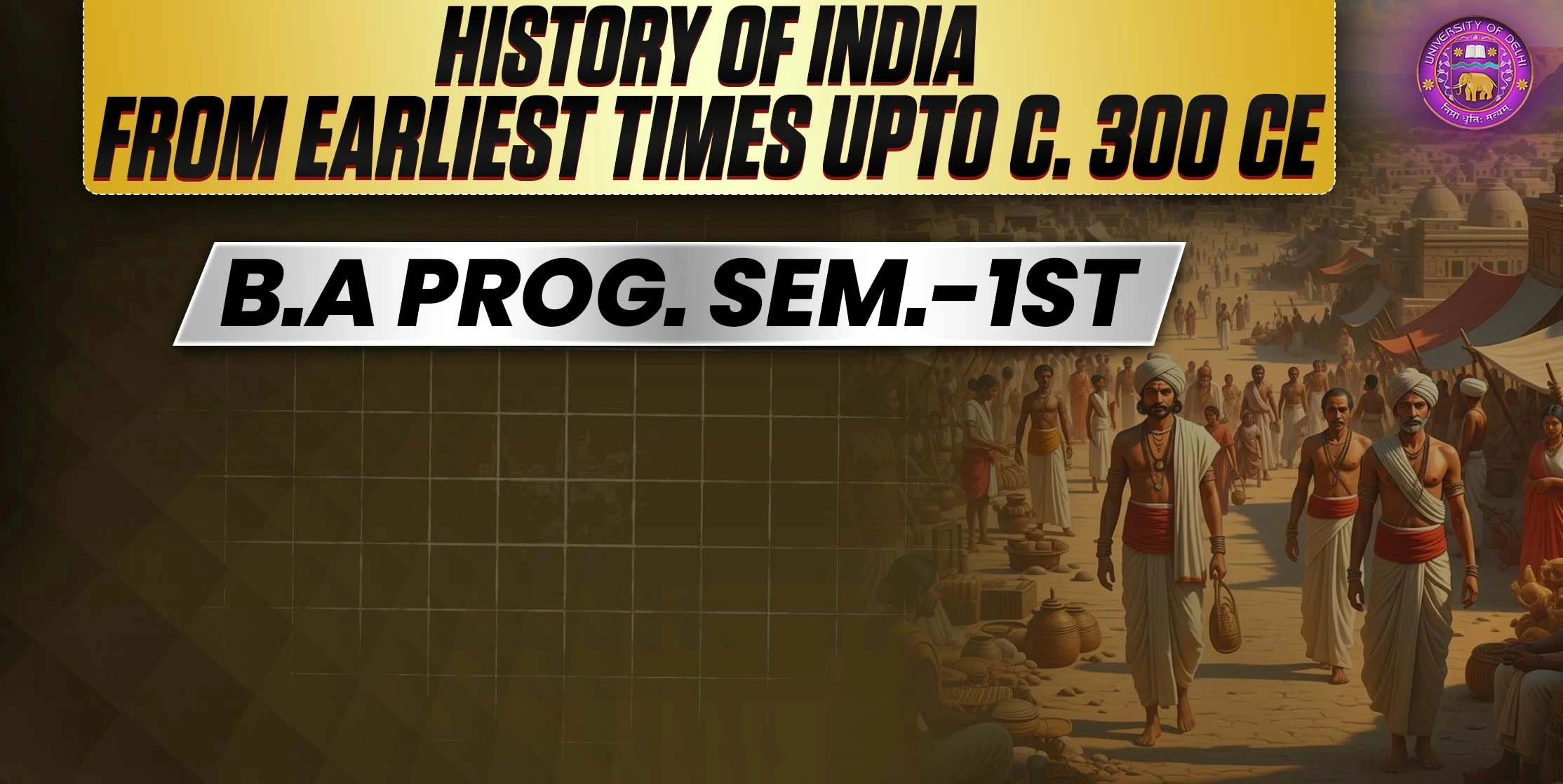
Get in Touch
We will get back to you within 24 hours.
Welcome to MVS Blog

OR
Evaluate the importance of literary sources for the study of ancient Indian history.
Answer - introduction
In order to study the life of Indian people in the past, we have to rely on different sources of Indian history. Although there is an absence of any historical chronicle, it does not mean that Indians lacked in historical sense. The information derived from literary sources and corroborated by archaeological evidence helps us to form a complete picture of our ancient times. The sources for the reconstruction of ancient Indian history can be studied under three broad headings namely-
(1) Literary sources
(2) Archaeological sources
(3) Accounts of the foreign historians and travellers.
LITERARY SOURCES
Literary sources may broadly be divided into three main parts:
(1) Socio- religious scriptures,
(2) Secular literature
(3) Historical writings.
1. Socio-Religious Scriptures: Socio-religious scriptures again can be classified into three main branches namely
(i) Hindu: Sometimes it becomes difficult to draw a clear-cut demarcation between religious and secular literature. However, such exceptions will be referred to in course of present discussion.
Rig-Veda is the only indigenous source for reconstructing the history of the Rig-Vedic Aryans. History of the Later Vedic Civilization generally is to be traced in the following main scriptures: the three later Vedas, namely, Sam Veda, Yajur Veda and Atharva Veda; the two great epics namely Ramayana and Mahabharata which throw a flood of light on different aspects of Hindu society before sixth century B.C.
(ii) Buddhist: The Buddhist and the Jain literature bear more authentic informations on the basis of which, since sixth century B.C., political history of ancient India has been ascertained more or less in chronological order with occasional gaps.
The following are the important Buddhist religious works which preserve valuable testimonies on the present subject of study; Tripitakas contain all the basic aspects of Buddhist socio-religious order.
(iii) Jain: The following important Jain works, such as, twelve-Angas, Kalpasutra, Bhagavati Sutra, Marutunga, Parisistaparvan, Uttaradhayayana, Andhara-Magadhi, Sthaviravali, etc. not only bear important historical data on Jain religion and culture, but also on important monarchs like Bimbisara, Ajatasatru, Mahapadma Nanda, Chandragupta Maurya etc.
2. Secular Literature: Besides these socio-religious scriptures, there is a vast secular literature containing valuable historical evidence on ancient India. It may be divided into following three main parts
(i) Works relating to Political economy,
(ii) Drama
(iii) Biography.
3. Historical Writings: Ancient Indian historical writings may be divided into following two categories (1) History written by individual historians, and (2) Historical chronicles preserved by different local dynasties.
(i) Individual Historians: Among the historical writings of individual historians, the most important one is the Rajatarangini written in verse by Kalhana in A.D.
(ii) Local Dynastic Chronicles: A number of dynastic historical chronicles have been found in different parts of Northern India.
ARCHAEOLOGICAL SOURCES
Archaeology is a field of research that seeks to find artefacts to attempt to understand the sequence of past events to find knowledge about the past. Archaeology-based knowledge is assumptions that do not actually need to be correct in all situations.
Archaeology refers to the study of prehistoric cultures where no written documents are available, and involves practices such as surveying and excavation, drone use, computer and virtual archaeology.
Archaeological sources of information Monuments, inscription, coins, pottery, jewellery, seals and many more are archaeological sources of information.
Inscriptions:
Inscriptions supply valuable historical facts. The study of inscriptions is called epigraphy. The study of the writings on ancient inscriptions and records is called palaeography. Inscriptions are seen on rocks, pillars, stones, slabs, walls of buildings, and body of temples.
Numismatic:

The study of coins is known as numismatics. Coins form another source of historical information. Ancient coins were mostly made of gold, silver, copper or lead. Coin moulds of Kushan period made of burnt clay have been also discovered. Some of the coins contain religious and legendary symbols which throw light on the culture of that time. Coins also contain the figures of kings and gods.
The coins of the Kushana and the Gupta period give interesting accounts of those days. They throw light on religious, political, economic and commercial conditions. Every coin of the past has some story to convey.
ACCOUNTS OF THE FOREIGN HISTORIANS AND TRAVELLERS
In ancient times, a number of travellers from Greece, Arabs, Western Asia, and China visited India. These travellers left numerous accounts of the happenings seen by them. These foreign travellers had no obligation to any king of the region therefore their accounts are unbiased which provides first-hand information on the subjects they touched upon. The invasion of Alexander provided a passage to the various Greeks and Roman explorers and travellers to India.
The Greeks and Romans
Chinese
Fa-Hien: He came India in 5th century AD. during Gupta period.He was a Buddhist monk, visited India to seek knowledge and visit Buddhist pilgrimage centres.
Hiuen-Tsang: He is Chinese Buddhist monk who visited India during Harshavardhana’s reign. He started his journey in 629 AD and reached in 630 AD.
Arabs
Sulaiman: He visited India in 9th century A.D. He had written about Pal and Pratihar rulers of his time.
Al-Masudi: He stayed in India for two years from 941 to 943 A.D. He had written about Rashtrakutas.
Conclusion
India has a very rich ancient history. There is the concept of the Indus valley civilization, which is the most advanced of civilizations. Then again, one has all these empires which were victorious enough that their glories could be heard afar. Evidence of the ancient history could be obtained from archaeological sources, which are found during the excavations.
There are ample numbers of foreign accounts on the part of various travelers, ambassadors or many other literary scholars who came to visit ancient India during the reign of kings in the past.
0 Response